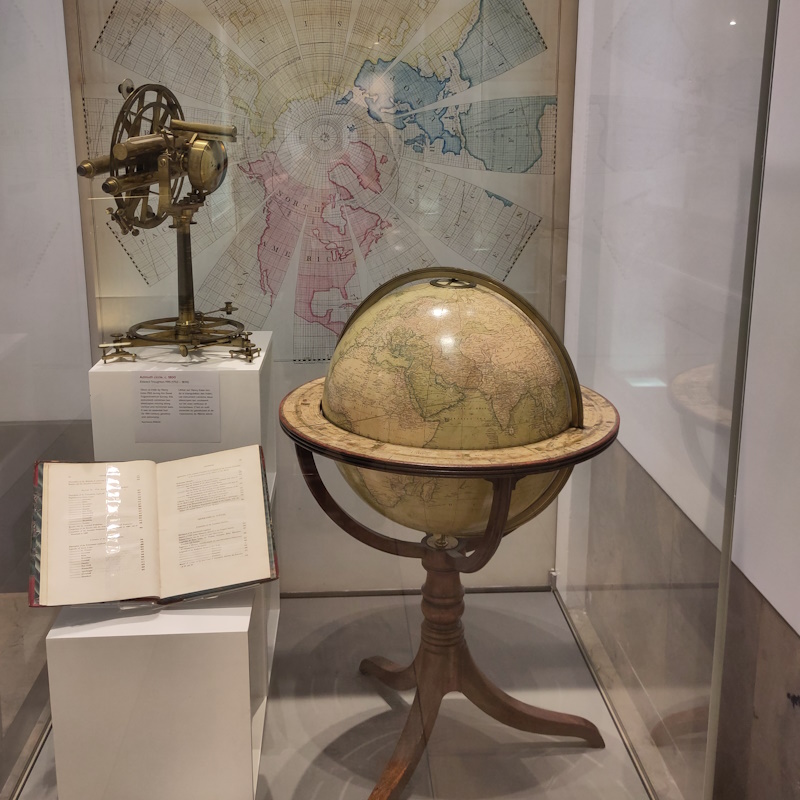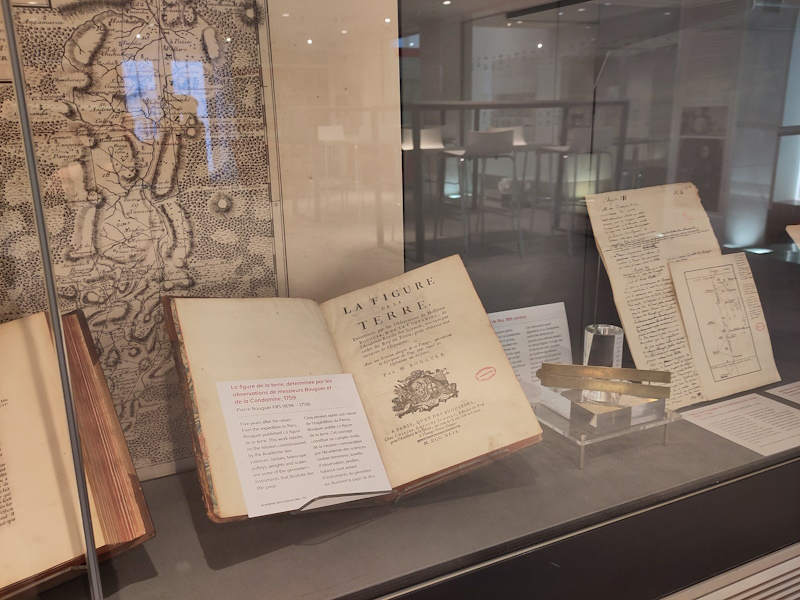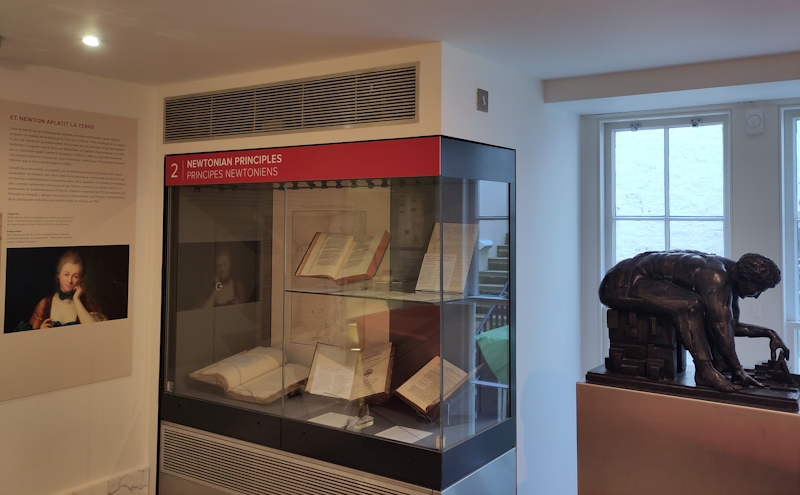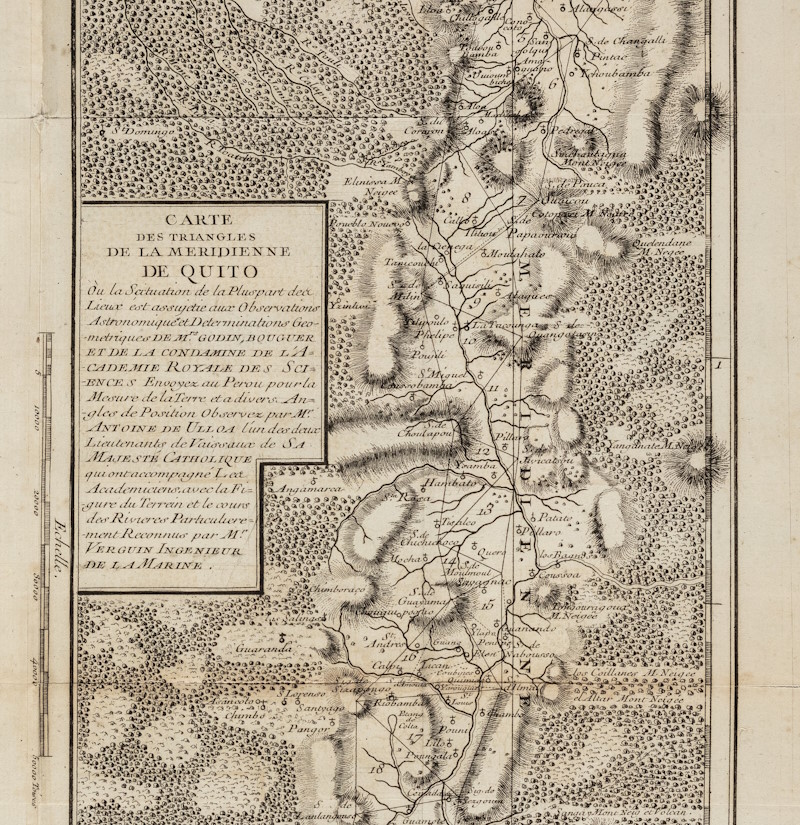Louisiane Ferlier introduces the first international collaborative exhibition put on by the Royal Society Library team, jointly curated with the French Académie des sciences.

Our Library collections team curates a programme of exhibitions, open to members of the public who visit the Royal Society’s home in Carlton House Terrace. Ahead of the Summer Science Exhibition 2024, I was delighted to launch our current display: ‘Figuring the Earth: perspectives from the Académie des sciences and the Royal Society’, available until October.
We were proud to see ‘Figuring the Earth’ featured in this Guardian article. We think the exhibition is special for many reasons, and I hope that by setting them out in this blogpost, you’ll be tempted to come and see it in person.
This is the first international collaborative exhibition we’ve put on at Carlton House Terrace, and it was curated jointly with the Académie des sciences in Paris. It features items from the collections of both institutions, and the interpretative text is bilingual.

Visitors to the display can see our first edition of Isaac Newton’s Principia mathematica side by side with the copy of the Marquise du Châtelet’s translation from the collections of the Académie, framed by our Eduardo Paolozzi maquette of Newton and a portrait of the Marquise:

The exhibition retraces the history of the scientific quest to measure and model the shape of the Earth, a fascinating topic that sparked historical debates between the two institutions which took decades to resolve. As Voltaire wrote in 1724: ‘In Paris you see the Earth shaped like a melon; in London it is flattened on two sides.’
On display, you’ll find explanations of the trigonometrical methods employed by surveyors, and the tools they used, from zenith telescopes to satellites. The manuscripts, instruments and rare books in the exhibition cases tell the story of the expeditions commissioned by the Académie des sciences to investigate Newton’s theory that the Earth was oblate (flattened at the poles) when several of their most distinguished members were certain it was prolate (lengthened at both ends).
The dramatic twists and turns of the 1735-1739 French geodesic expedition to South America, led by Pierre Bouguer FRS and Charles de La Condamine FRS, would be worthy of an entire exhibition by themselves. Navigating Andean volcanoes, the Amazon jungle and the political complexities of the Real Audiencia of Quito, the voyage produced the first measures of an arc of meridian close to the Equator.
 Map from Bouguer and La Condamine's La figure de la terre, 1749 (RCN 29486)
Map from Bouguer and La Condamine's La figure de la terre, 1749 (RCN 29486)
Beyond this relatively famous episode, I particularly enjoyed curating the display cases that tell of the expansion of the global surveying effort through the latter part of the eighteenth century. It was fascinating to discover how the Anglo-French Survey of 1784-1790 was created because of the invitation sent by Cassini de Thury to the Royal Society to measure the distance between the Greenwich and Paris observatories through triangulation. This in turn followed the publication of Cassini de Thury’s own map of France, presented to the Royal Society but now sadly lost.
It was equally intriguing to see the network of triangles joining up across the Channel as the survey progressed, led by William Roy FRS (1726-1790). Cassini de Thury’s original request was justified by the need to place accurately the observatories in Greenwich and Paris for astronomical observations, but it led to both the Ordnance Survey, started a year after Roy’s death, and the international surveying movement that followed along colonial routes through the nineteenth century.
We’re also displaying for the first time in many years our terrestrial globe, conserved specially for the occasion:
As you’ll discover in our final display case, dedicated to measuring the Earth from satellites, our current 3D models of the Earth represent it much ‘like a potato’ as Desmond King-Hele FRS wrote in his 1974 Bakerian Lecture. This is largely because of the Indian Ocean magnetic anomaly discovered in 1948.
It has been a treat to curate this exhibition. If you need one last reason to pay us a visit, take it as an appetiser for the upcoming Science Museum Versailles: Science and Splendour extravaganza. You can visit our Royal Society exhibition at 7 Carlton House Terrace every weekday between 10am and 5pm until 4 October 2024.







